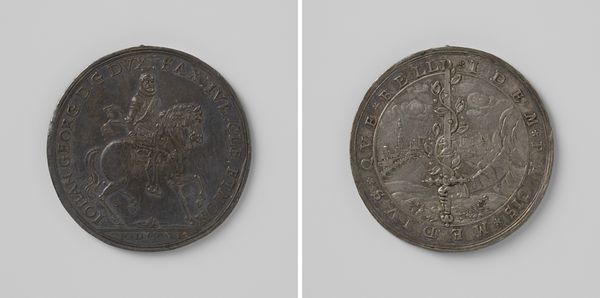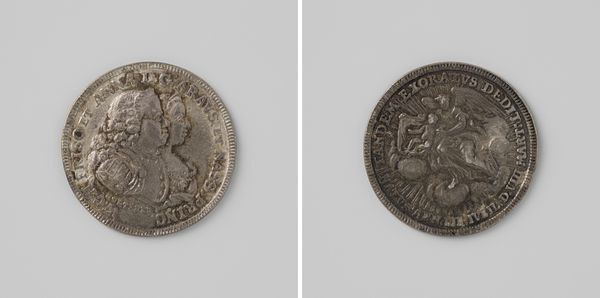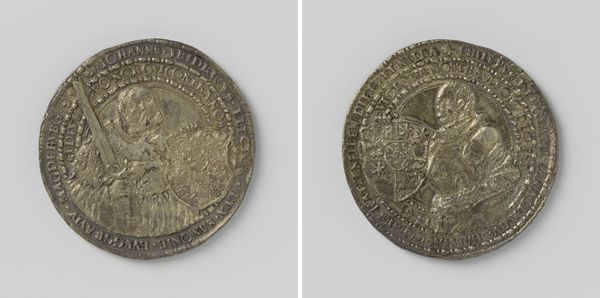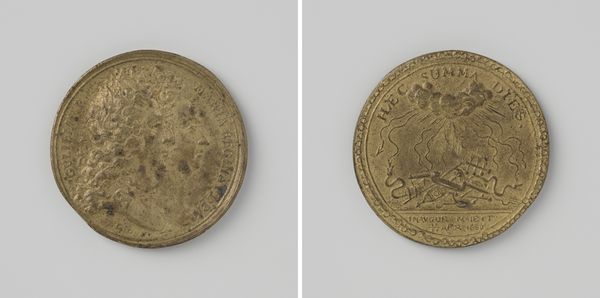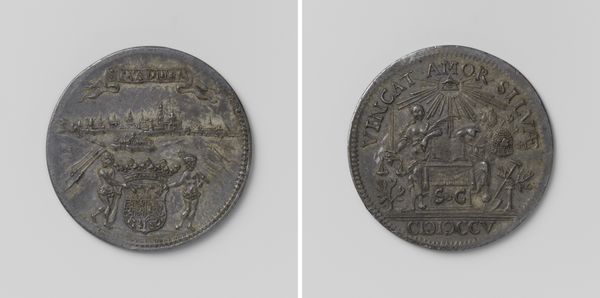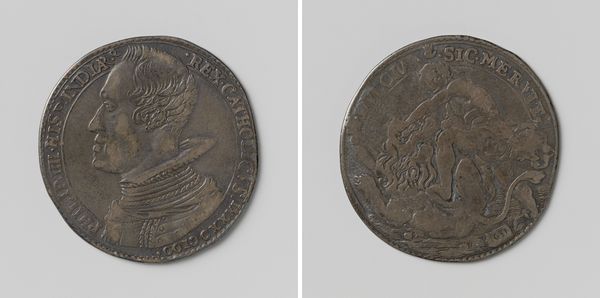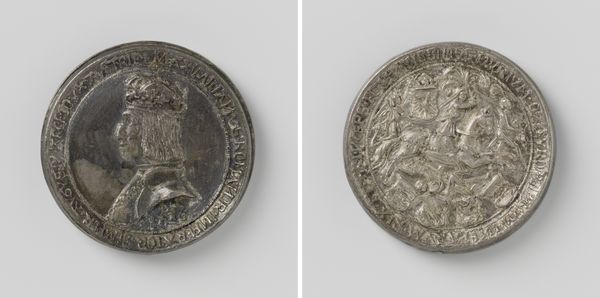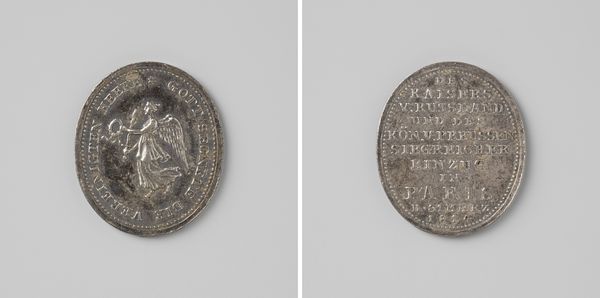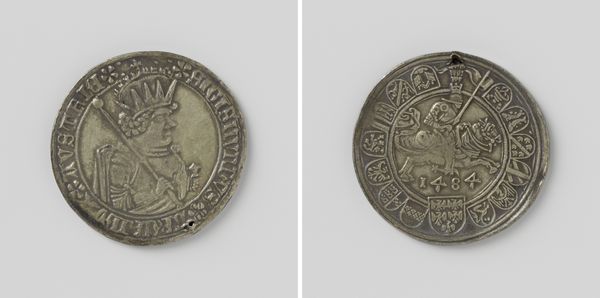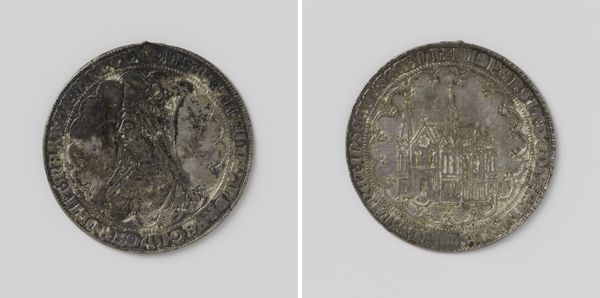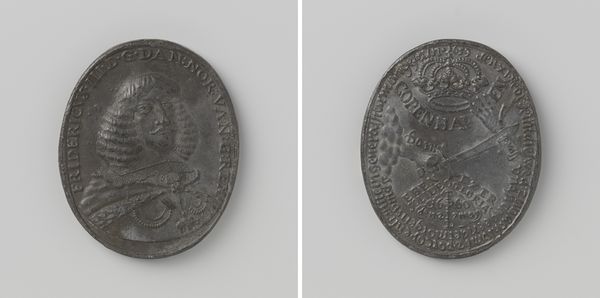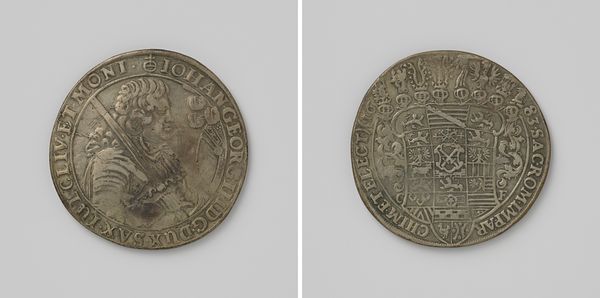
Dubbele taler van kardinaal Matthaeus Lang van Wellenburg, aartsbisschop van Salzburg en bisschop van Gurk 1522
0:00
0:00
silver, print, metal, relief
#
portrait
#
medieval
#
silver
# print
#
metal
#
relief
#
11_renaissance
#
history-painting
Dimensions: diameter 4 cm, weight 28.82 gr
Copyright: Rijks Museum: Open Domain
Curator: This double taler from 1522 presents a portrait of Cardinal Matthaeus Lang von Wellenburg. He was Archbishop of Salzburg and Bishop of Gurk. The silver relief print, crafted by Ulrich Ursenthaler, showcases his profile. Editor: Initially, the thing that grabs me is how weighty it feels, historically speaking. I imagine the lives this object has touched, the transactions it has facilitated. It's got real gravity. Curator: Absolutely. Ursenthaler has captured Lang's rather stern countenance with incredible detail, hasn’t he? You can almost feel the weight of his office etched into his face. And opposite is the complex heraldry which I find totally inscrutable at first glance. Editor: Stern is one word for it! It reads "authority" to me – the church’s and, of course, by extension the empire’s authority embodied. Looking at those coats of arms—the symbols of lineage, power, ownership—it becomes an icon of both religious and secular dominion. Curator: Do you think Ursenthaler intentionally portrayed him with that austere look? Was it flattery, capturing the essence of a powerful man, or perhaps something a little bit mischievous? I mean, there’s that slight upturn to the corner of his mouth…almost a smirk, isn’t it? Editor: Maybe a smirk hints that everything's performance, that this power is a construct! More deeply, this artifact encapsulates the contradictions inherent in religious authority during the Renaissance. We are dealing with wealth accumulation, power consolidated through the Church and aristocratic lineage. The material itself—silver—speaks to inherent class division. Curator: You’re absolutely right to point out those tensions. Ursenthaler was probably making shrewd observations about power structures. I still can't get over the artistic mastery within something so small. You could balance it on your finger and yet… it’s so impactful. Editor: And there lies its enduring power as an object. Something so compact, designed for tangible exchange but equally loaded with intangible assertions of sovereignty. I keep thinking how objects like these influenced visual languages for centuries afterward. Curator: Yes! We still see the echoes today. Perhaps thinking about the original owner, von Wellenberg, he was an astute and complicated man living through turbulent times of reform! The work has allowed us to reimagine his world. Editor: To reconsider what truly endures across the ages, beyond any single person or regime. It all amounts to legacies that exist on both sides.
Comments
No comments
Be the first to comment and join the conversation on the ultimate creative platform.
